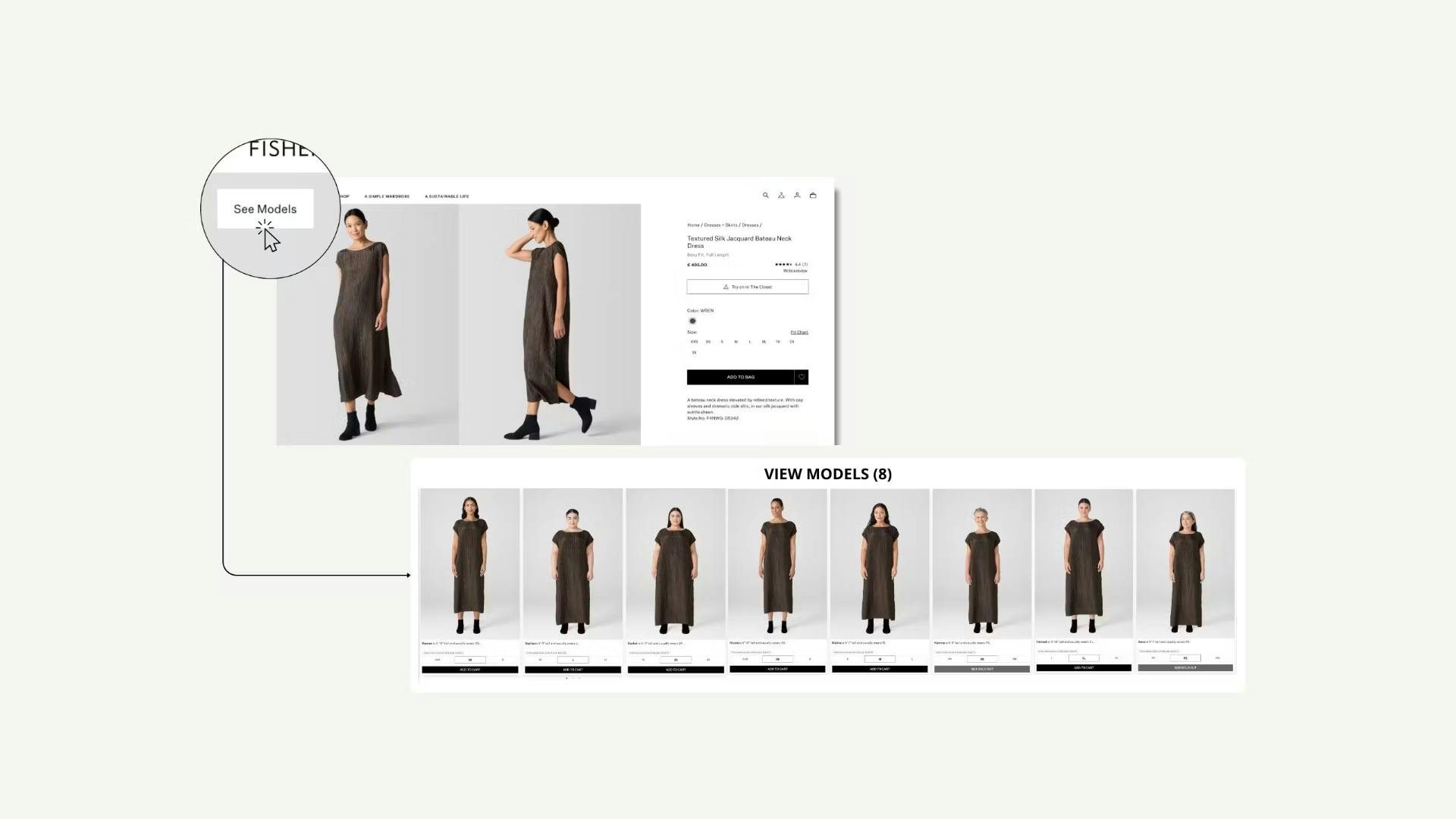
Augmented e-commerce: a trend that has become the new standard
The shopping experience is constantly evolving, and consumer needs are changing with it. Online shopping, which was once limited to simply selecting products from a catalog, has been transformed by the growing demand for personalization and innovation. Today's consumers are more demanding than ever, expecting unique shopping experiences tailored to their individual needs.
Augmented shopping: a growing trend in e-commerce
Whether augmented reality, virtual reality or 3D, these new technologies are transforming the shopping experience, enabling e-commerce customers to interact with products in a more immersive and personalized way.
They can visualize, try on, change product colors... all of these features perfectly reproduce the in-store experience and enhance customer satisfaction.
Augmented shopping has been democratized in several sectors: fashion, cosmetics, automotive, furniture... responding to the specificities of each field.
The impact of this new trend is not limited to the customer. Indeed, by offering innovative experiences, brands stand out from their competitors, increase their online conversion and build long-term customer loyalty.
Augmented shopping also helps brands reduce the costs associated with product returns, as customers are able to make more informed purchasing decisions. What's more, brands can access data on customers' preferences and buying habits, enabling them to refine their marketing strategy and propose more personalized offers.
Augmented shopping in the fashion industry
1) Snapchat: from social network to shopping platform
Far from fun filters and avatars, Snapchat is now offering its users augmented shopping experiences. Snapchat users can now try on clothes, make-up and accessories from a range of brands.
This development comes from a study conducted by Ipsos on behalf of Snap, entitled "Augmentality Shift". Conducted in spring 2022 in 16 countries, the study revealed some very interesting data on the perceived value of augmented reality:
- 56% of consumers see shopping as the main reason for using augmented reality (63% among millennials)
- 72% of consumers are interested in using augmented reality to interact with a product before purchasing it
- 82% of brands using augmented reality say it increases sales, acquires new customers and improves key performance indicators
- Products offering augmented reality experiences to customers have a conversion rate of 94%
Noticing these indicators, Snapchat launched AR Explore: a dedicated shopping area on its app.
In concrete terms, brands can design filters that allow consumers to try out their products. Options range from 2D, which applies products to photos as if seen in a mirror, to 3D solutions, which use videos and scaled images of the products in question.
Consumers quickly see product information on a simplified interface: price, description and a single URL for purchase.
On the brand side, real-time results, instant feedback on products that appeal to the public, are opening up to a new target (Generation Z and millennials).
As the feature continues to evolve, Snapchat counts over 250 million people who have used its Shopping Lenses more than 5 billion times.
2) Enhanced e-commerce experiences with Veesual
To boost fashion e-commerce, Veesual has set up augmented e-commerce experiences for brands.
There are several of these, such as Mix&Match, which lets shoppers try on clothes directly online and compose their own look by assembling tops, bottoms, jackets, shoes and accessories, while browsing the brands' various collections.
Or Switch Model, which lets customers choose a mannequin with whom they identify by morphology, size, skin color... and try on clothes on the same mannequin.
These experiences increase customer engagement, boost conversion through cross-selling (via look recommendations) and reflect the inclusive nature of brands on their websites.
Want to know more about augmented e-commerce experiences?
Contact us at hello@veesual.ai
RESOURCES
Discover our new article

How Veesual’s Switch Model & Multi-Sizing Enhance Eileen Fisher’s Online Shopping Experience
In the world of online shopping, uncertainty around fit and style often leads to hesitation and returns. But with new solutions like Switch Model and Multi-Sizing, we plan on transforming the virtual fitting experience for shoppers, helping them make more confident purchasing decisions while promoting inclusivity. These innovations, currently live on EILEEN FISHER’s website, are set to reshape the future of fashion e-commerce.

Virtual Try-On, Virtual Styling, Virtual Fitting: How to Choose the Right AI Experience for Your E-Commerce Strategy
In the fast-evolving world of e-commerce, technologies like Virtual Try-On (VTO), Virtual Fitting, and Virtual Styling are reshaping the way customers shop online. While these terms are often used interchangeably, each serves a unique purpose. For brands, understanding these distinctions is key to leveraging the right technology to drive conversions, reduce returns, and enhance customer loyalty.

The Role of AI in Elevating Luxury Experiences
Artificial Intelligence (AI) is often associated with automation, efficiency, and scalability—concepts that might seem at odds with the world of luxury, where authenticity, craftsmanship, and exclusivity reign supreme. Despite these apparent contradictions, AI holds transformative potential for luxury brands, offering new ways to enhance the distinctive experiences they deliver to their discerning clientele.

